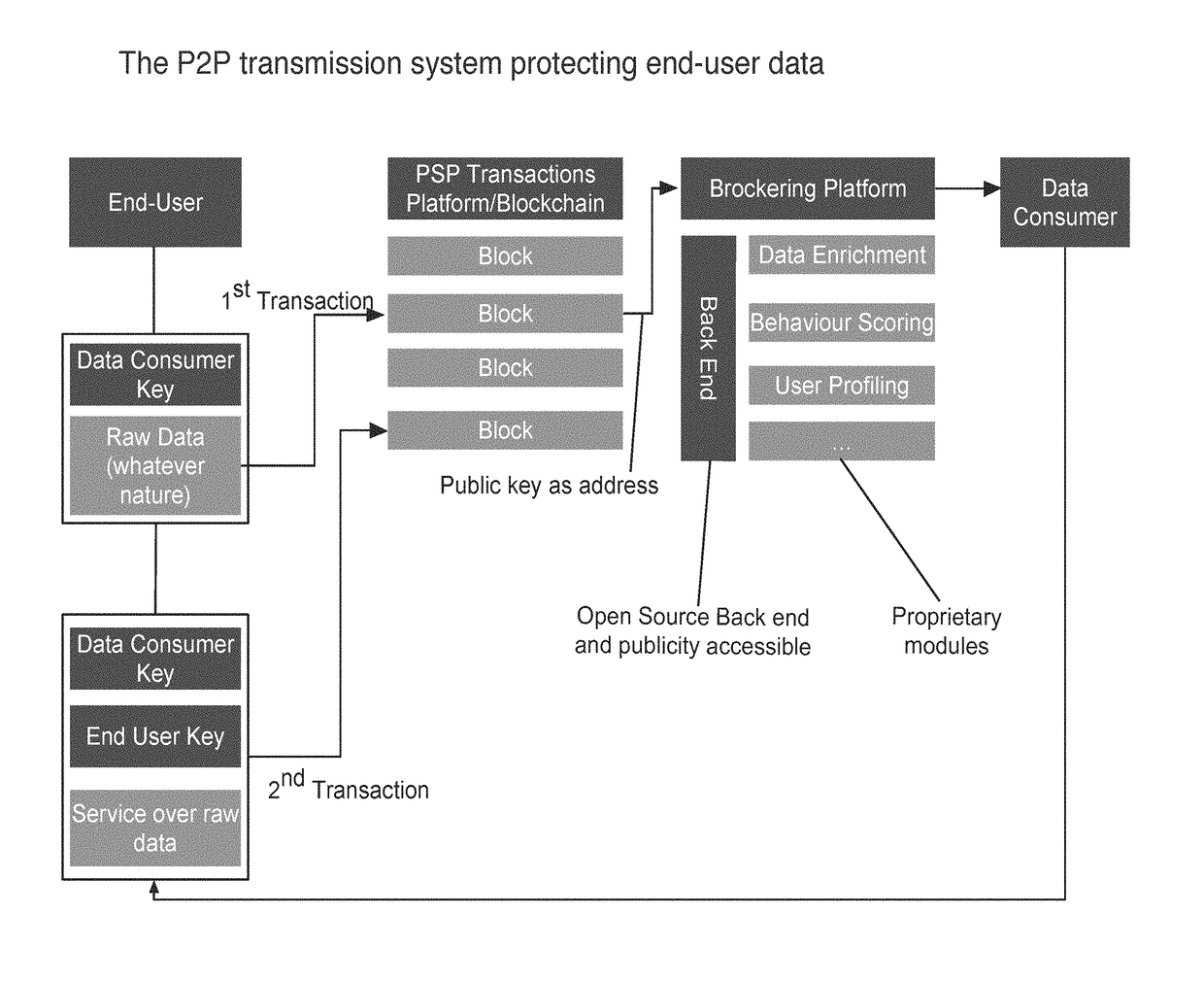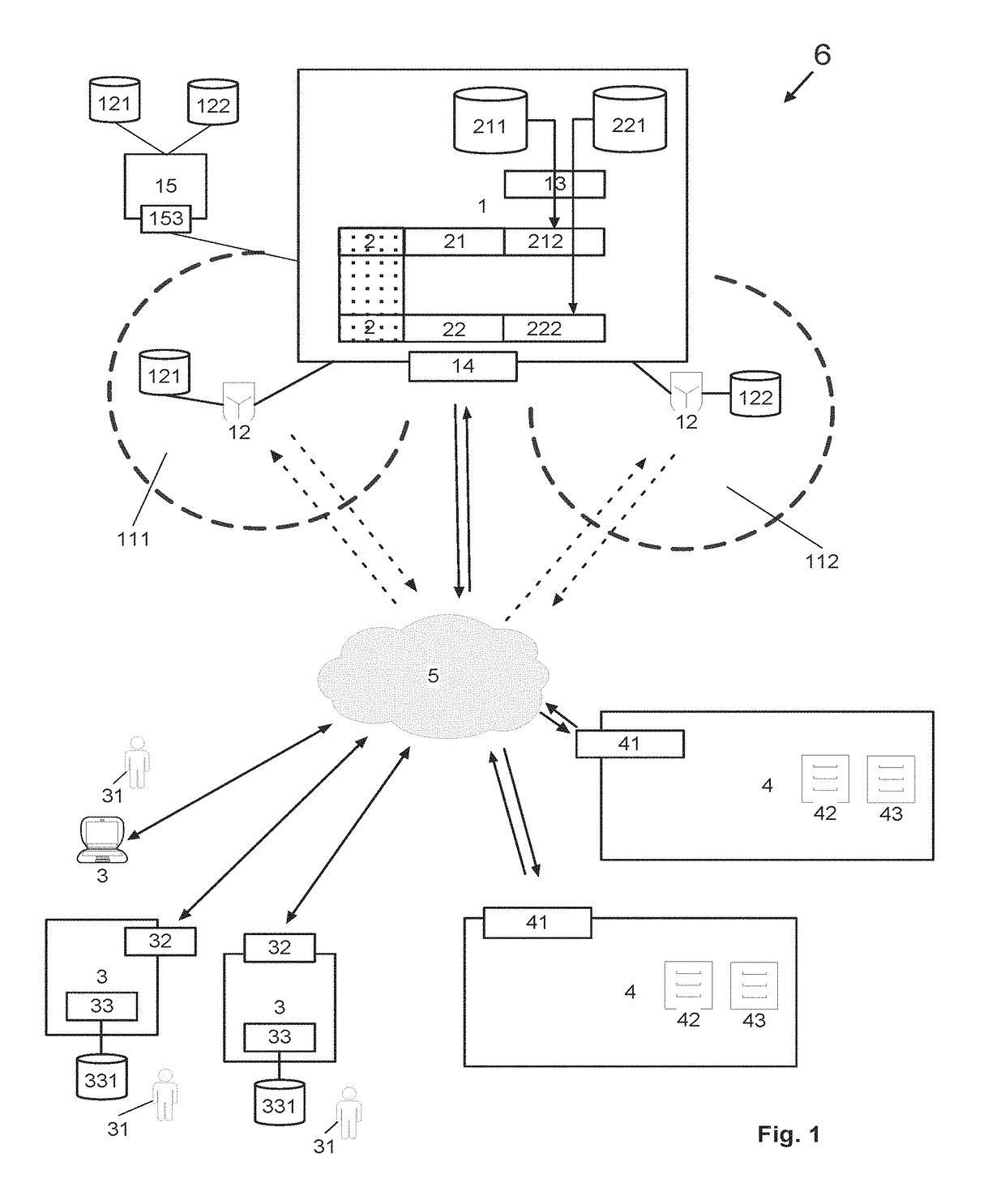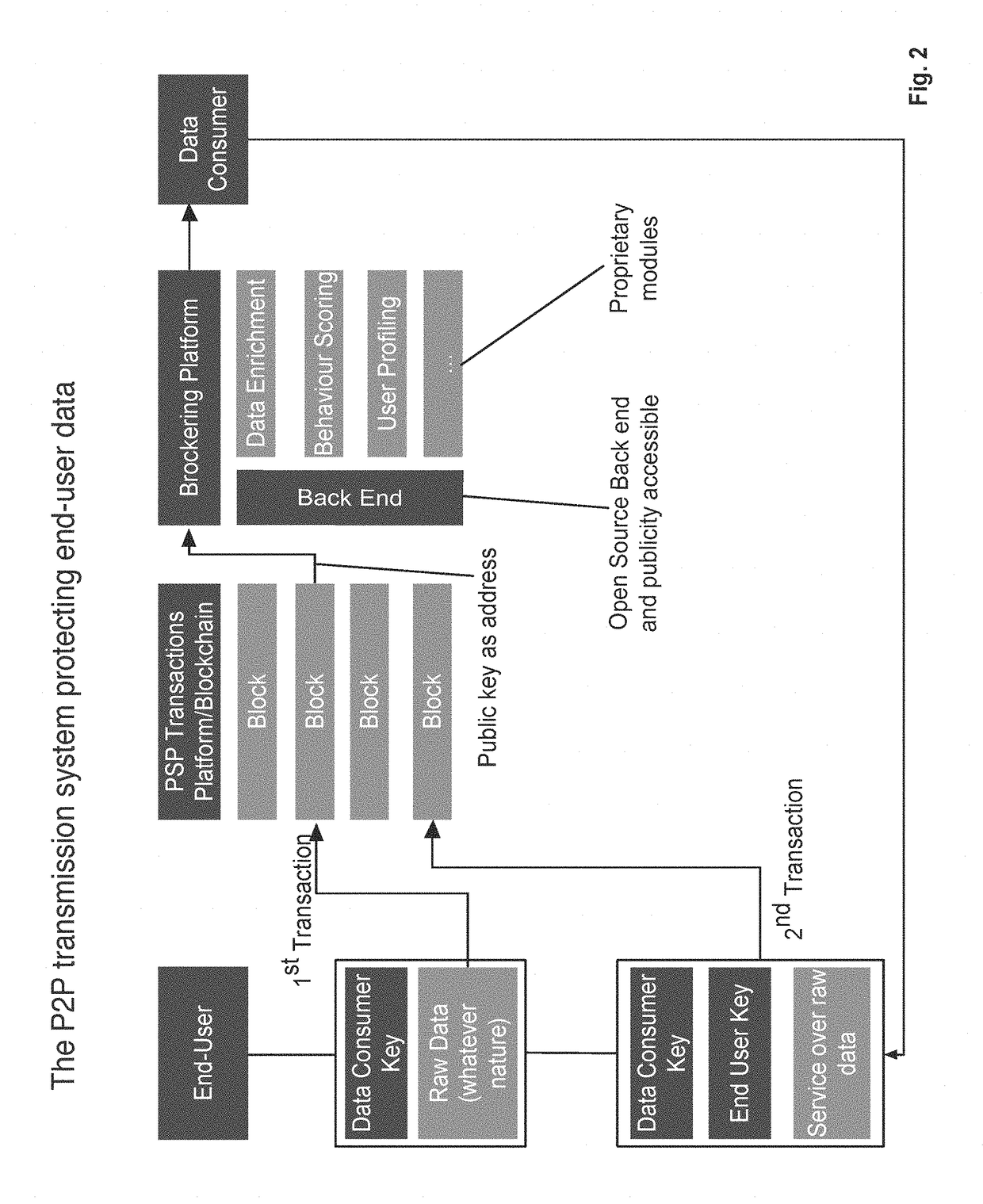Secure key management and peer-to-peer transmission system with a controlled, double-tier cryptographic key structure and corresponding method thereof
a cryptographic key and peer-to-peer transmission technology, applied in the field of secure content distribution systems, can solve the problems of end-users not being willing to share such data with third parties, being targeted by electronic, networked and other attacks, and being vulnerable to attacks originating anywhere in the world
- Summary
- Abstract
- Description
- Claims
- Application Information
AI Technical Summary
Benefits of technology
Problems solved by technology
Method used
Image
Examples
Embodiment Construction
[0026]FIG. 1 schematically illustrates an architecture for a possible implementation of an embodiment of the secure key management, peer-to-peer transmission system 6 providing a closed cryptosystem for secure content distribution within a secured network environment based on a controlled, double-tier encrypting cryptographic key structure 2. Individual, user-specific data 331 are measured and / or captured and / or generated by means of at least one capturing device 33 associated with a user network node 3, and, based on the individual, user-specific data 331 services are requested from and provided to the user network node 3 by means of a data consumer network node 4. The captured individual, user-specific data 331 are transmitted from the user network node 3 to a central, P2P transmission system 1 via a data transmission network 5 and stored in the central, P2P transmission system 1, wherein the individual, user-specific data 331 are processed by means of a non-storage-based processi...
PUM
 Login to View More
Login to View More Abstract
Description
Claims
Application Information
 Login to View More
Login to View More - R&D
- Intellectual Property
- Life Sciences
- Materials
- Tech Scout
- Unparalleled Data Quality
- Higher Quality Content
- 60% Fewer Hallucinations
Browse by: Latest US Patents, China's latest patents, Technical Efficacy Thesaurus, Application Domain, Technology Topic, Popular Technical Reports.
© 2025 PatSnap. All rights reserved.Legal|Privacy policy|Modern Slavery Act Transparency Statement|Sitemap|About US| Contact US: help@patsnap.com



